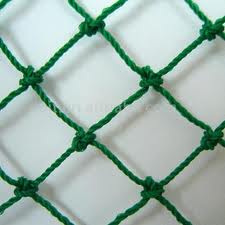Often plaster mesh is not required, but when it is needed it’s useful to know which type of plaster mesh is most affordable – chicken wire, plastic mesh or fishing net. I think stucco mesh is overkill and so it’s not covered here, although it’s often required by code and so you’ll have to plan for this if your building regulations call for it. For ease of checking prices on lots of items quickly for cost estimates, I suggest an online site such as Lowes.com.
Poultry netting (chicken wire): $14.97 for 4’x50′ roll = 200 sq. ft., which is 7.5 cents/sq. ft. (narrower, shorter rolls are much more expensive).
Plastic mesh: (low cost option) $13.93 for 4’x50′ roll = 200 sq. ft., which is about 7 cents/sq. ft.
Nylon fishing net (priced locally): $3.78 for 6’x52’ roll = 312 sq. ft. when stretched out. That makes it about 1.2 cents/per square foot. (You might even be able to obtain used fishing net in decent condition for free.) Like plastic mesh, fishing net won’t rust and so it’s durable in wet climates.
At about one sixth the cost of poultry netting and plastic mesh, fishing net wins hands down. And think how strong it is. It’s used to pull out heavy loads of fish year after year and stand up to underwater use. So, fishing net is my first choice for affordable plaster mesh. Photo below shows typical 1.5″x1.5″ spacing.


Dear Owen,
I’m writing to you when you are in the grave, but just wanted to thank you for all your advice to me, but more importantly, for all of your selfless contributions to the world of natural building, especially Earthbags.
God bless and you are missed my friend.
You can also express your sentiments for Owen at https://www.forevermissed.com/owen-geiger/about
Hi Owen, we’re building an earthbag house in Oklahoma with 3 roundhouse-style rooms. We’re considering our options for exterior plaster as we (reci) roof our first room. It seems like there’s some conflict about whether NHL lime plaster will create a secure bond on top of clay plaster in the long run. Does NHL adhere directly to polypropylene or would we need to use a mesh layer for that? Under what circumstances do you recommend using mesh? What should the dimensions of the squares be? I see a good deal on plastic mesh at home depot (7’x100′ for $20) but the squares are only 3/4″.
Also, while I have your attention, is it always necessary to use a weep screed? How many inches above a gravel/rock perimeter would it need to be?
Sorry, I don’t have personal experience in this area so I suggest getting one or more good books on natural plaster.
Weep screeds are always a good idea. Talk to locals and use their recommendations.
Just wanted to say you sir are the man! Seen your quotes all over the bagosphere, Kelly Hart and also a couple downloads, and I didn’t even realise I had landed on your site! Google knows best, clearly. Especially considering how big a deal this particular question was for me. Thank you for all you do.
Thanks. Stick around. We have thousands of pages of free info now about all aspects of natural building.
Where did you get that fish netting at that price.
I’m doing my first earthbag project. Without much research I built the first course of the wall slightly below the soil level filled with dirt on top of a small concrete foundation.
I’m sure it’s going to be wicking moisture which is why I’m choosing to use the fishing line.
I think I should probably put in some drainage along the edge of the wall.
Also m wall seems a bit wobbly. Not sure why. It’s only 4′ high with a couple low buttresses.
I’m not sure what I’ve got myself into. Any support would be appreciated
You’ve set yourself up for ongoing problems by putting soil-filled bags below grade. You didn’t say if they’re stabilized with cement or lime, if so then they’re okay. If they’re not stabilized, they’ll just turn to mud when they get wet. Consider taking the wall apart and raising it at least 6″ above grade. 12″ is better if you get a lot of rain, snow or blowing rain.
Are you building a low value structure like a storage shed? You could probably save the walls by putting a 2′ wide strip of 6 mil poly sheeting along the bottom of the wall and running a French drain around the edge.
Most often you don’t need mesh. Plaster directly on the walls. But now you have to add something so the plaster will have something to grab onto where you have black poly. I would use plastic mesh on the lower walls, not fishing net, because it’s more rigid.